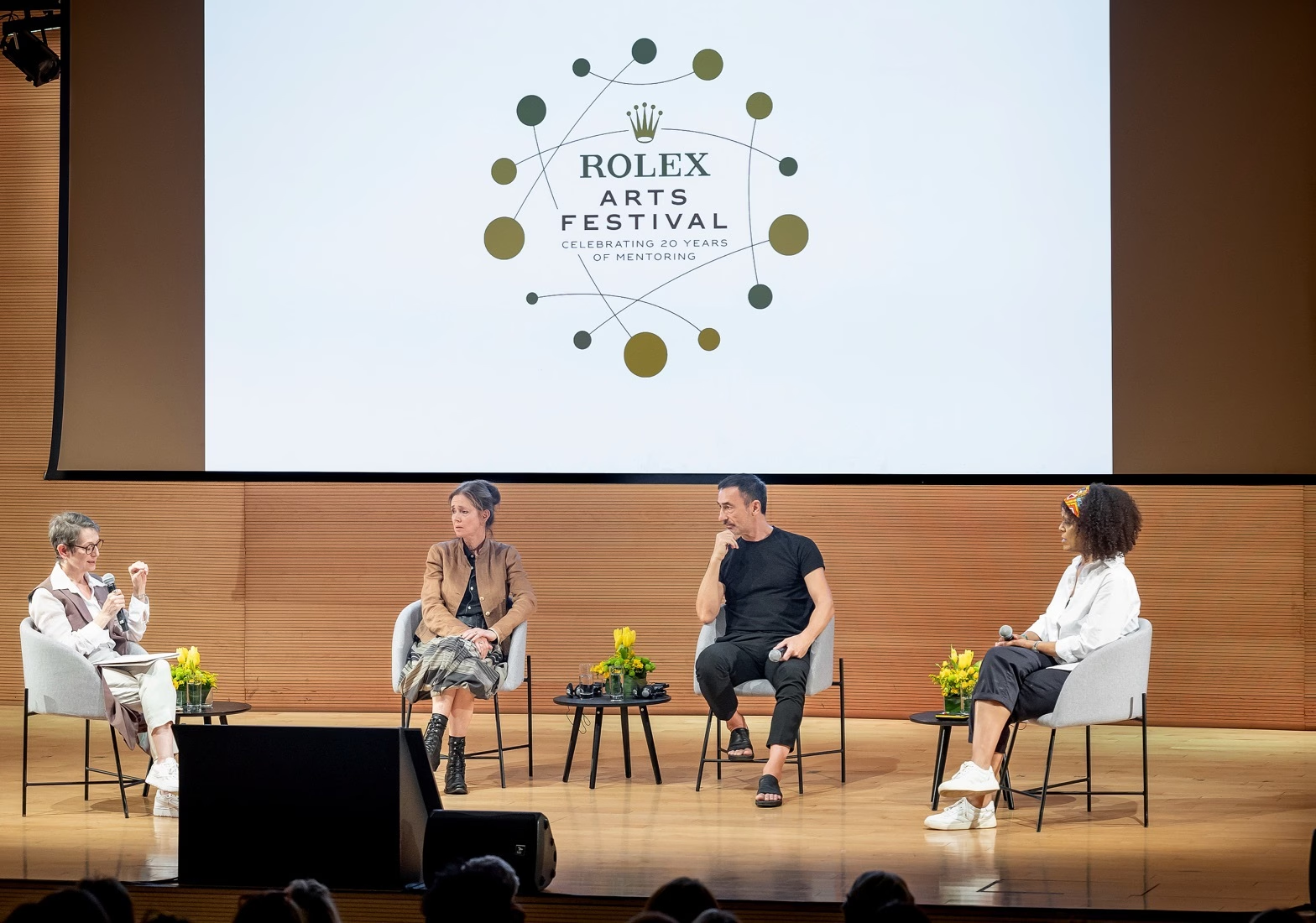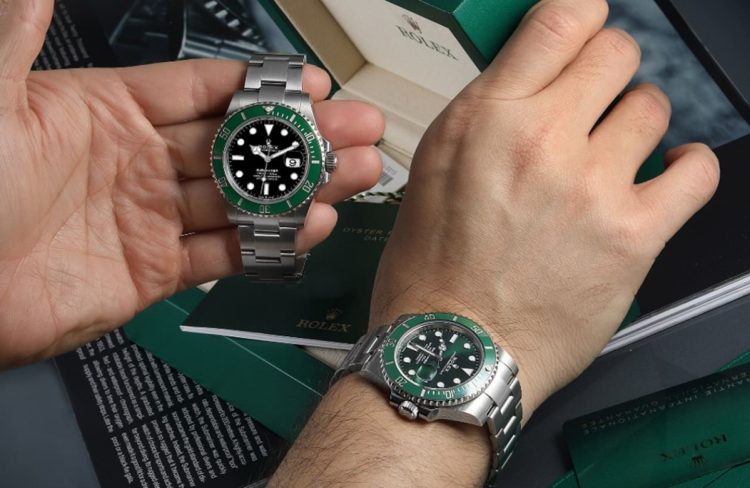Introduction
Rolex is more than just a watch brand. It is an icon—synonymous with luxury, elegance, and achievement. From its origins in the early 20th century to its status as the most recognized and coveted watch brand in the world, Rolex has transcended the role of timekeeper to become a symbol of aspiration, cultural status, and craftsmanship.
For many, owning a Rolex is not merely about possessing an exquisite timepiece; it represents success, mastery, and a commitment to quality. The brand’s influence extends beyond watchmaking, creating a lasting impact on culture, sport, art, and even societal values. This article explores the culture surrounding Rolex watches and the profound influence they have had on the world, highlighting key moments in history, the values that drive the brand, and its broader influence across various domains.
Chapter 1: The Birth of Rolex – A Pioneer of Watchmaking Innovation
1.1 The Origins of Rolex
Founded in 1905 by Hans Wilsdorf and Alfred Davis in London, the Rolex brand quickly gained recognition for its innovative approach to watchmaking. Wilsdorf, a visionary who sought to create a precise and durable wristwatch, established the brand as one of the first to gain official certification from the Swiss Official Chronometer Testing Institute (COSC) for its precision movements.
The introduction of the “Rolex” name in 1908 and its first waterproof watch, the Oyster, in 1926, marked milestones in the brand’s development. Rolex was not just about functionality; it was a perfect blend of artistry and engineering, pushing boundaries in a rapidly evolving industry.
1.2 Early Innovations and Milestones
- Waterproof Technology: Rolex’s breakthrough Oyster case in 1926 made the watch the first truly waterproof wristwatch. This milestone positioned Rolex as a leader in durability and reliability.
- The Perpetual Rotor: In 1931, Rolex patented the Perpetual rotor, an automatic movement system that wound itself with the movement of the wearer’s wrist. This innovation changed the watch industry by eliminating the need for manual winding.
- The Datejust (1945): Introduced as the first wristwatch with an automatically changing date, the Datejust became an enduring symbol of Rolex’s commitment to precision and functionality.
These innovations laid the foundation for Rolex to become not only a leader in technology but also a symbol of status and excellence.
Chapter 2: Rolex’s Role in Shaping Modern Luxury
2.1 Rolex and the Luxury Watch Market
Over the decades, Rolex has firmly positioned itself at the apex of the luxury watch market. Its strategy of combining craftsmanship, precision, and exclusivity has allowed the brand to maintain its allure in an increasingly competitive industry. Rolex watches are often seen as more than functional tools; they are coveted pieces of art that represent achievement and a mark of success.
Unlike many luxury brands, Rolex has avoided the allure of mass marketing or celebrity endorsements early on, allowing the product itself to become the focal point. The result is a timeless image of sophistication and luxury that remains as desirable today as it was decades ago.
2.2 Rolex as a Cultural Icon
From Hollywood to sports, Rolex has become more than just a timepiece. Its association with success and prestige has made it a part of cultural mythology.
- The Hollywood Connection: Rolex watches have been worn by numerous Hollywood legends, from Paul Newman and Steve McQueen to James Bond, whose affinity for Rolex contributed to the brand’s cultural symbolism. The portrayal of Rolex in films and media amplified its reputation as the watch of choice for those at the top of their respective fields.
- Rolex in the Sports World: Rolex’s presence in the world of sports, particularly tennis, golf, and motorsports, has been integral to its cultural influence. Rolex’s sponsorship of elite athletes and prestigious events like Wimbledon, the US Open, and Formula 1 has cemented its association with precision, performance, and high achievement.
- Rolex and Exploration: Rolex’s strong ties with exploration and adventure further enhanced its reputation as a brand for those who strive to push the limits of human achievement. From Sir Edmund Hillary’s ascent of Mount Everest to the deep-sea explorations of the Rolex Deepsea, Rolex’s presence in extreme environments reinforced its narrative of resilience and innovation.
2.3 The Role of Craftsmanship in Rolex’s Brand Identity
The foundation of Rolex’s cultural influence is its unyielding commitment to quality and craftsmanship. Every Rolex watch is a product of meticulous attention to detail, with over 200 steps involved in its creation, including the hand-finishing of components and rigorous testing of the movements. The brand’s focus on producing watches that are not only functional but also beautiful has resulted in a strong association with luxury and timeless design.
Chapter 3: Rolex and the World of Collecting – A Status Symbol
3.1 The Rolex as a Symbol of Success
Rolex has achieved unparalleled status as a symbol of success. Whether worn by professionals, celebrities, or enthusiasts, the Rolex watch communicates a powerful message about the wearer’s success, ambition, and social standing.
- A Rite of Passage: For many, purchasing a Rolex is a rite of passage—marking an achievement in life, such as graduation, a promotion, or retirement. This connection between Rolex and life’s major milestones has helped reinforce its symbolic significance.
- Investment Value: Rolex watches are known for retaining or increasing in value over time. Certain models, like the Rolex Daytona, have appreciated significantly, creating a unique intersection between luxury, craftsmanship, and financial investment.
3.2 The Impact on Watch Collecting Culture
The Rolex watch has become synonymous with the world of high-end collecting. Rolex collectors seek not only the best models but also rare, vintage, and limited-edition pieces. The secondary market for Rolex watches is massive, with some pieces selling for multiples of their original retail price.
- The Vintage Rolex Market: Models such as the Rolex Submariner, GMT-Master, and Daytona have become collectors’ treasures, with some vintage examples reaching staggering prices at auctions. The quest for rare and discontinued models has fostered a subculture of Rolex collectors who view watches as both objects of beauty and financial assets.
- Rolex and Auction Houses: Major auction houses such as Sotheby’s and Christie’s have played a key role in elevating Rolex’s status in the collector’s world. Record-breaking auctions of vintage Rolex watches have brought the brand even further into the spotlight, further solidifying its place as an investment-grade luxury item.

Chapter 4: The Psychological and Emotional Appeal of Rolex
4.1 The Desire for Perfection
The psychology behind owning a Rolex is often rooted in the desire for perfection. Rolex watches are meticulously engineered to be not only visually striking but also technically flawless. For many, the Rolex represents the culmination of hard work and dedication—a tool that performs at the highest level.
- Aspiration and Status: Rolex is more than just a luxury watch—it’s a statement. The desire for a Rolex is often driven by the symbolism of success, ambition, and the journey toward self-actualization. It becomes a tangible reminder of the wearer’s accomplishments and aspirations.
- The Emotional Connection: Rolex watches are often passed down through generations, creating a sense of continuity and legacy. Many owners feel a deep emotional connection to their Rolex, whether it’s the first watch they purchased or a family heirloom passed down over time. This emotional resonance adds to the brand’s mystique and appeal.
4.2 The Enduring Appeal of Classic Design
One of the key reasons Rolex has maintained its cultural dominance is its timeless design philosophy. Rolex has managed to stay true to its heritage while embracing modern innovations. The design of models like the Oyster Perpetual, Submariner, and Datejust has remained largely unchanged for decades, lending them an ageless quality that appeals to both collectors and casual wearers.
- Timeless Aesthetics: The understated elegance of Rolex watches makes them universally appealing. Whether it’s the simplicity of the Datejust or the ruggedness of the Submariner, the design language of Rolex watches transcends trends, remaining relevant across generations.
- Durability and Longevity: Rolex watches are designed to last a lifetime, with many models capable of being passed down through generations. The robust construction of the cases, the corrosion-resistant materials, and the precise movements ensure that a Rolex can be worn and cherished for decades.
Chapter 5: Rolex’s Influence on the Watch Industry
5.1 Rolex’s Impact on Watchmaking Innovation
Rolex has been at the forefront of numerous technical innovations in the watchmaking world. From the development of the first waterproof case to the self-winding Perpetual rotor, Rolex has set industry standards that other brands have followed.
- The Oyster Case and Water Resistance: The introduction of the Oyster case revolutionized the watch industry by ensuring watches could withstand harsh conditions. This innovation laid the foundation for the development of water-resistant and durable watches across the industry.
- The Rolex Perpetual Movement: Rolex’s Perpetual movement system has influenced the design and functionality of automatic watches. Its design has been replicated by numerous watchmakers, solidifying Rolex’s reputation for innovation.
Conclusion: The Enduring Legacy of Rolex
Rolex has built a reputation not just for producing luxury watches but for creating symbols of aspiration, precision, and success. The brand’s influence spans beyond the world of horology and touches various facets of culture, sport, art, and society. Its continued relevance, both as a status symbol and as an icon of innovation, is a testament to the power of brand identity and craftsmanship.
Through its cultural impact, dedication to excellence, and timeless appeal, Rolex has secured its place in history—not only as a watchmaker but as a cultural institution in its own right. The enduring legacy of Rolex will continue to inspire future generations, shaping the landscape of luxury and beyond.





































